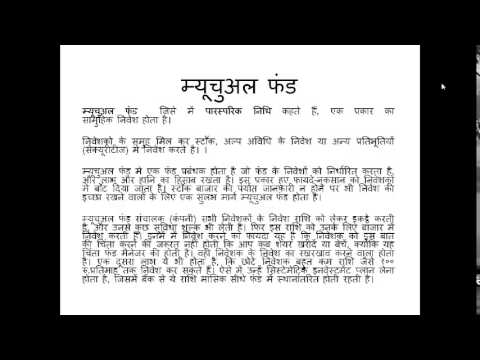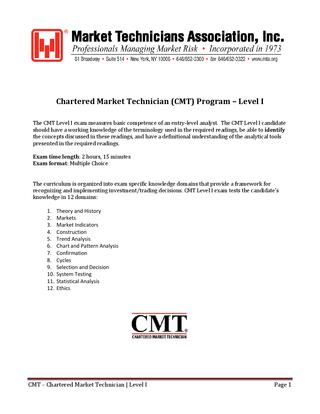Contents
Even if the rate of interest is very low, private enterprises may not be willing to make new investment in time of depression due to lack of profitable business opportunities. It is also the responsibility of the monetary authority to ensure that the funds of the institutions are diverted into priority sectors or industries as per requirements of be development plan of the country. Now the question is how effectively does the RBI act on such targets? The truth is that RBI is not in a position to act on them directly. The main reason for this is its imperfect monitoring of the operation of the economy.

It’s disruptive for banks to change procedures and regulations to meet a new requirement. If the PCE Index for core inflation rises much above 2%, then the Fed implements contractionary monetary policy. One economist maintained that stagflation took place when the tight monetary policy did not encourage the strong private sector to play a key part in growth. In its report, submitted in 1985, the Committee, among other things, laid stress on the desirability of developing monetary targets at the aggregate level for securing an acceptable and orderly pattern of monetary growth. It is to be carefully noted that the targets of money supply and interest rate pose a problem of mutually exclusivity. The monetary authority can select an interest rate or a money supply target, but not both.
Now you can follow Dawn Business on Twitter, LinkedIn, Instagram and Facebook for insights on business, finance and tech from Pakistan and across the world. It added that the government remained committed to reducing the overall budget deficit in FY2023, reviving the IMF programme and putting „Pakistan back on a sustainable growth path“. The Finance Division said the consultations, which began on May 18, „reviewed fiscal and monetary situation for FY2022 and proposed measures for FY2023“. Ismail said the IMF team emphasised the importance of „rolling back“ fuel and power subsidies, which were given by the previous administration in contravention of its own agreement with the Fund.
Expansionary vs. Contractionary Monetary Policy
This policy is based on maintaining a fixed exchange rate with a foreign currency. There are varying degrees of fixed exchange rates, which can be ranked in relation to how rigid the fixed exchange rate is with the anchor nation. Central banks can directly or indirectly influence the allocation of bank lending in certain sectors of the economy by applying quotas, limits or differentiated interest rates. Monetary policy is an economic policy that manages the size and growth rate of the money supply in an economy. It is a powerful tool to regulate macroeconomic variables such as inflation and unemployment.
This involves increasing tax rates or reducing government expenditure. This is a monetary policy that aims to increase the money supply in the economy by decreasing interest rates, purchasing government securities by central banks, and lowering the reserve requirements for banks. An expansionary policy lowers unemployment and stimulates business activities and consumer spending. The overall goal of the expansionary monetary policy is to fuel economic growth. The central bank tightens policy or makes money tight by raising short-term interest rates through policy changes to the discount rate and federal funds rate.
To minimize or slow down inflation, a central bank could make it more expensive for consumers to spend money and businesses to borrow money by raising interest rates. This is a form of contractionary monetary policy—it restricts, or contracts, spending. The purpose of a restrictive or tight monetary policy is to ward off inflation. A 2% annual price increase is actually good for the economy because it stimulates demand. People expect prices to be higher later, so they may buy more now. That’s why many central banks have an inflation target of around 2%.

While the Government of India sets the Flexible Inflation Targeting Framework in India, it is the Reserve Bank of India which operates the Monetary Policy Framework of the country. The Reserve Bank of India is vested with the responsibility of conducting monetary policy. This responsibility is explicitly mandated under the Reserve Bank of India Act, 1934. RBI uses various monetary instruments like REPO rate, Reverse RERO rate, SLR, CRR etc to achieve its purpose. (This is explained well in one of our earlier articles – basics of economy concepts). Capital flight may increase the interest cost of firms with existing External Commercial borrowing .
Monetary policy analysis and decisions hence traditionally rely on this New Classical approach. Nominal anchors are possible with various exchange rate regimes. The Consumer Price Index-based inflation was the highest in 17 months tight monetary policy in March at 6.95%. Besides, since the last MPC meeting in April, inflationary pressures because of external factors such as oil and commodity prices, and supply chain disruptions because of geopolitical tensions, have persisted.
FREE UPSC Study Materials
The Fed had instituted contractionary monetary policies to curb the hyperinflation of the late 1920s. During the recession or stock market crash of 1929, it didn’t switch to expansionary monetary policy as it should have. To implement a contractionary policy, the Fed sells these Treasurys to its member banks. The bank must pay the Fed for the Treasurys, reducing the credit on its books. The bank will raise interest rates to make lending more expensive. That reduces the amount of money and credit that banks can lend.
Tight monetary policy refers to the actions that a central bank takes to limit inflation and an overheating economy. Tight monetary policy is commonly called contractionary monetary policy. Monetary policy is a set of actions available to a nation’s central bank to achieve sustainable economic growth by adjusting the money supply. The Federal Reserve uses open market operations such as buying or selling U.S. Treasuries to adjust the federal funds rate for monetary policy. Former Fed Chair Ben Bernanke said contractionary policy caused the Great Depression.
Moreover, pursuing constant money supply target will be pro-cyclical. Increase in the rate of interest induces an increase in money supply. In such condition, constant money stock-policy will require that the monetary authority should reduce money supply. In India, a new tool of monetary control has been introduced for taking out large resources from the banking sector for financing public investment, viz., statutory liquidity ratio . Now in addition to keeping cash reserves commercial banks are to keep a minimum portion of their total demand and time deposits in some specified liquid assets, mainly in government and other approved securities’. Infrastructure building is so important for economic development.
Alternatively in theory, the Central Bank could try and reduce the money supply. For example, printing less money, or sell long dated government bonds to banking sector. Though open market operations haven’t been used in practise for quite a while. The Reserve Bank’s Monetary Policy Department assists the MPC in formulating the monetary policy.

The Monetary Policy Committee is expected to raise the repo rate by 50 basis points. However, the pace of monetary tightening will be largely guided by domestic economic indicators, as analysts flagged that significant risks to India’s growth and inflation trajectory have emerged. Reserve Bank of India Governor Shakitkanta Das in the last policy said they will do ‘whatever it takes to cool inflation. Since the last meeting, price pressures have intensified again and India’s local currency has slumped to a nadir. However, numerous studies shown that such a monetary policy targeting better matches central bank losses and welfare optimizing monetary policy compared to more standard monetary policy targeting. In the 1980s, several countries used an approach based on a constant growth in the money supply.
India’s stocks are yet to feel tight money
In the 1920s, the UK had a period of low inflation and deflation which caused very high real interest rates. Tight monetary policy can also be termed – deflationary monetary policy. Investopedia requires writers to use primary sources to support their work. These include white papers, government data, original reporting, and interviews with industry experts. We also reference original research from other reputable publishers where appropriate.
Francis Duffy has been writing professionally for over 25 years. Duffy has written 14 major market-research studies for Business Communications Co. Allied Business https://1investing.in/ Intelligence and Communications Industry Researchers, and articles for Datapro, EBSCONotes ResearchStarters™ Business and EBSCONotes ResearchStarters™ Sociology.
- With rising prices and also broad-based second round price pressures, raising policy rates is recommended.
- The most simple example of tight monetary policy would involve increasing interest rates.
- A bank pays for these securities with money it would have otherwise lent to businesses and consumer customers.
- It is a prime concern and an alarming condition for the Federal Reserve.
- Liquidity Adjustment Facility – The LAFconsists of overnight as well as term repo auctions.
It has also carried out an exercise, on an experimental basis operationally meaningful targets and monitor them. In developing this exercise, several technical problems were faced. These problems related to- the choice of candidate variables, volatility of these variables, and their seasonal variations. Recently, the need for pursuing monetary target has been widely recognised and seriously discussed in India. In 1982, the Reserve Bank of India appointed a committee, with Prof. Sukhmoy Chakravarty as its chairman, with the objective of reviewing the working of monetary system in the country. Banks must also provide adequate credit to meet the minimum working capital needs of agriculture and industry.
Marathon Petroleum and Phillips 66 cruise past estimates on fuel demand surge
Inflation hurts economies because it affects investments and company decisions. Firstly, increasing inflation expands the gap between nominal interest rates and real interest rates. Third, producers and suppliers may not release the stock commodities in anticipation of future price increases. Finally, the greatest risk connected with inflation is that it may spiral out of control, devastating the economy due to hyperinflation. Thus when inflation in the economy is seen rising, it is crucial to control it. If you have a quick glance of an economics textbook, zero interest rates imply loose monetary policy – low interest rates make borrowing cheap, mortgages cheap, and in theory should encourage spending and a higher rate of economic growth.
Instruments of Monetary Policy
Tight monetary policy will typically be chosen when inflation is above the inflation target (of 2%) or policymakers fear inflation is likely to rise without a tightening of monetary policy. For example, in the early 1980s, the government increased interest rates in response to higher inflation. Tight monetary policy is meant to “contract” or slow down the economy.
Rather, high interest on the productive sector will add to cost-push inflation. To influence the money supply, some central banks may require that some or all foreign exchange receipts be exchanged for the local currency. The rate that is used to purchase local currency may be market-based or arbitrarily set by the bank. This tool is generally used in countries with non-convertible currencies or partially convertible currencies.
Depending on its objectives, monetary policies can be expansionary or contractionary. In effect, these factors are adding to inflation concerns for the Fed and the markets. While the consumer price inflation has eased from its surge in April, the RBI said it remains uncomfortably high and above the upper threshold of the target. Reserve Bank of India operates the Monetary Policy Framework of the country. Open Market Operations – These include both, outright purchase and sale of government securities, for injection and absorption of durable liquidity, respectively. Bank Rate– The rate at which the RBI is ready to buy bills of exchange or other commercial papers.
In the case of the Federal Reserve, they are the local Federal Reserve Banks; for the ECB they are the national central banks. The gold standard is a system by which the price of the national currency is fixed vis-a-vis the value of gold, and is kept constant by the government’s promise to buy or sell gold at a fixed price in terms of the base currency. The gold standard might be regarded as a special case of „fixed exchange rate“ policy, or as a special type of commodity price level targeting. Using its fiscal authority, a central bank can regulate the exchange rates between domestic and foreign currencies. For example, the central bank may increase the money supply by issuing more currency.

